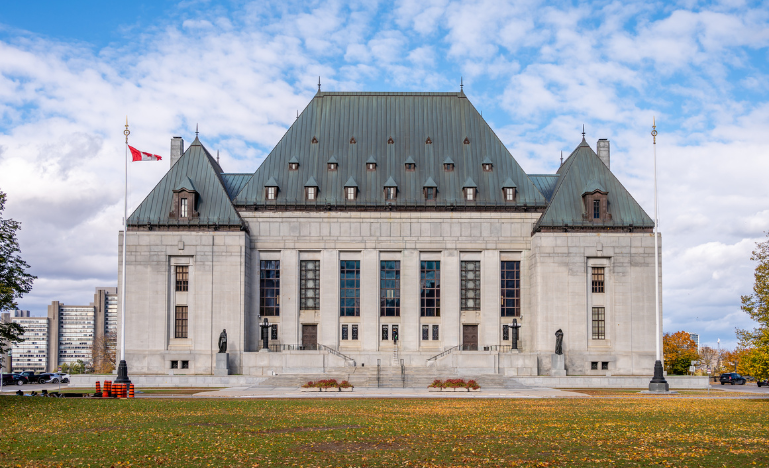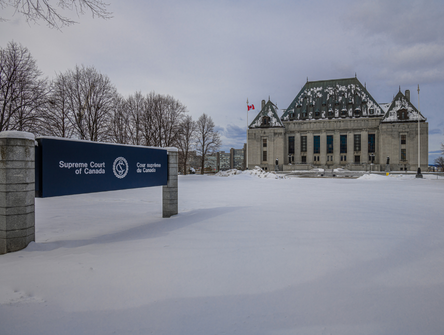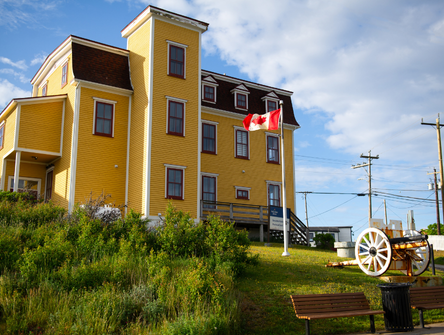What’s on the Supreme Court of Canada’s docket this fall?
Following a ceremonial opening and debut of new robes, a busy sitting with 20 appeal hearings is underway

The Supreme Court of Canada’s 150th fall session kicked off earlier this week with a ceremonial opening not seen in nearly four decades. It also marked the debut of the justices’ new ceremonial robes. This leads into a busy fall sitting with 20 appeal hearings and one oral leave application on the docket — a similar caseload to the past two fall sittings.
In the mix are 10 criminal hearings, including the oral leave application; five of the hearings arrived at the Court as of right. The remaining 11 cases are civil and constitutional, with three to be held over the course of two days each.
Thomas Slade, a partner at Supreme Advocacy LLP in Ottawa, who also runs a website called Fantasy Courts, where people can predict decisions from the top court before they are rendered, is very interested in the first case being heard, Chief of the Edmonton Police Service v. John McKee. It deals with disclosure around an expunged misconduct report and has 12 listed intervenors.
“I can see this having a big impact on criminal law cases, because it deals with the scope of disclosure and when the police have to hand over disciplinary records,” he says.
“The Court is trying to find the right balance between proper disclosure of relevant information while at the same time not overburdening the Crown or the system as a whole.”
Slade says this ruling could also have an impact on the issue of court delays at a time when everyone in the system is having to do more with less.
“It pits a fundamental right of disclosure against the ability of the system to function properly. I am curious to see what tone the Court takes,” he says, noting it could end up being a case like Jordan with regard to court delays.
Then there’s Pharmascience Inc. v. Janssen Inc., which Nadia Effendi, a partner at Borden Ladner Gervais LLP in Toronto and the firm’s national business leader in commercial litigation, says is an unusual intellectual property case. She expects the Court will likely provide guidance on the test for determining whether a patent improperly claims a method of medical treatment.
“The Court has in the past held that methods of medical treatment in Canada are not patentable, and the prohibition frankly relates to the intersection between patent law, health, and that desire to balance the patent system with innovation,” Effendi said during an appearance on the Voices and Verdicts podcast.
Amendments to the Patent Act could impact the guidance the Court will provide.
Riddle v. ivari involves a spouse who went missing, a declaratory judgment of their death, and a life insurance company that applied to annul the declaration of death. The Court is being asked to opine on the type of proof required to annul a declaration of death, and whether an application by a third party to annul a declaration must be served on the person declared to be deceased.
“The insurance company in this case is claiming that (the missing spouse) is still alive and living in another country,” Effendi says.
“The Court had looked at this issue of declaration of death years ago, so it’s this contrast between rebutting this legal fiction versus the more decisive nature of the declaration of death that requires judicial annulment.”
One of the two-day hearings will be in Ryan Alford v. Canada, which tests the scope of parliamentary privilege with respect to the creation of the National Security and Intelligence Committee of Parliamentarians (NSICOP). The Ontario Court of Appeal unanimously overturned the Superior Court decision, and the Court may have felt there was a need for clarity.
“The Court will have to clarify the nature of parliamentary privilege, and the scope of Parliament’s power under the Act,” Effendi says.
“Professor Alford was granted this public interest standing to bring this challenge, which is not something that happens every day.”
There are 12 intervenors in this case, including several attorneys general, all of whom argue that they have the authority to amend their own parliamentary privilege.
The other constitutional case comes from New Brunswick. Société de l’Acadie du Nouveau-Brunswick c. Le très honorable premier minister du Canada is a challenge of the appointment of a unilingual lieutenant governor (who has since completed her term), and whether that violated linguistic rights in the province.
Effendi says that the case raises questions about the nature of institutional bilingualism and the symbolic role of the lieutenant governor.
“It really is the first time that the Court is being asked to determine whether a constitutional language right imposes personal qualification on these vice-regal representatives,” she says.
“Is it just the institution of the lieutenant governor that needs to be bilingual, or the person?”
Given the Court’s ongoing controversy with the translation of their past decisions, Slade says the case is an interesting one to watch.
“I’m curious to see how the Court handles that,” he says.
“Traditionally, they have been very pro-language rights, and it has been a matter of them applying the principles across the country.”
One noteworthy criminal case is His Majesty the King v. Harry Arthur Cope, which has attracted the attention of 20 intervenors. In the wake of the National Inquiry into Missing and Murdered Indigenous Women and Girls, changes were made to the Criminal Code to have sentencing considerations around violence against Indigenous women as a denunciation measure. The Code also contains Gladue factors for sentencing Indigenous offenders. These relate to any facet of their life that has been affected by colonialism or discrimination, and must be taken into consideration by a sentencing judge to prevent over-incarceration.
“The Court will have to clarify how judges are to approach sentencing where an Indigenous offender commits violence against an Indigenous female victim,” Effendi says, noting there’s tension between provisions of the Criminal Code at play here.
Slade is most interested in the twin appeals of Nisga’a Nation v. Malii, et al. and Skii km Lax Ha et al. v Malii, which deal with overlapping Indigenous title claims. The hearing will take place over two days in December, with 14 intervenors.
“Those are indicative of the next major issues that we see being dealt with in Aboriginal law,” he says.
“The Court has already addressed the tests for Aboriginal title, but the issue is how courts will deal with overlapping claims and rights over certain territories.”
Slade says this issue is likely to arise more frequently in the future, particularly with the growing recognition of Métis rights.
The case raises novel issues because it’s not clear from precedent how a court’s declaration of Aboriginal title for one Indigenous collective might affect a second lawsuit by a second Indigenous collective claiming title for the same territory.
Effendi wonders: “Would the second group be precluded from claiming it had occupation of that area? Would the findings from the first file bind the Crown against the second Indigenous collective?”
Also on Slade’s radar is the forthcoming decision to be rendered in Canadian Civil Liberties Association, et al. v. His Majesty the King in Right of Newfoundland and Labrador, et al., because it is one of the only COVID-19-related appeals that the Court heard. The case involves a Nova Scotia woman who was prevented from travelling to Newfoundland and Labrador for her mother’s funeral because of pandemic travel restrictions. The woman claims that the travel ban infringed upon her mobility rights under the Charter.
“Section 6 is not a section that gets a lot of attention,” he says, adding the case allows the Court to address measures related to COVID.
The Court will also deliver its judgment in His Majesty the King v. Paul Eric Wilson, which tests the Good Samaritan law. Slade says the case could have an impact on what’s happening in cities in relation to the opioid crisis.
“The Good Samaritan law was created as a way to reduce deaths, so seeing where the Court goes with that will be really interesting.”
Tune in to the full interview to hear more about the Court’s upcoming session.


